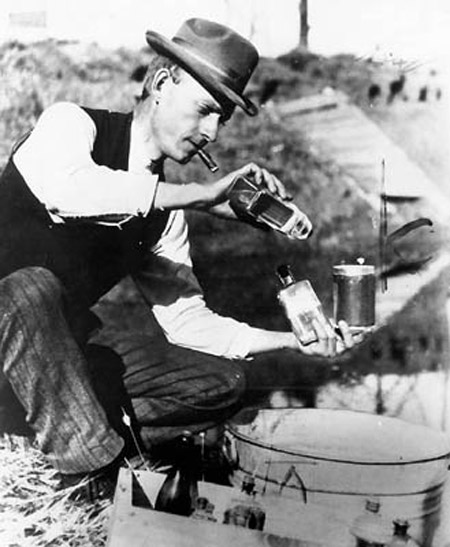 Submitted by LOGOS - Overseer on
Submitted by LOGOS - Overseer on

"I am a moisture accelerator." - Charles Hatfield
Charles Mallory Hatfield (1875-1958) was an ordinary man with an extraordinary talent... he could make it rain. To this day it has not been proven if Hatfield truly held a secret formula to make it rain or if his success can be attributed to meteorological skill and good timing.
Hatfield didn't rely on a rain dance to perform his aquatic miracles but rather a secret mixture of 23 chemicals that he kept in a galvanized vat. Hatfield worked for the New Home Sewing Machine Company as a salesman but in his spare time he studied "pluviculture" and began devising his own formula for rain making. He claimed 500 successes. His home base site of operation was a tower built on the grounds of the Esperanza Sanitarium in Altadena, near Rubio Canyon in California.
Hatfield's business started in Los Angeles, CA where he assisted farmers by "making rain" for $50 a session. The farmers often paid him $100 because they were so pleased with the results.
It did not take long for his reputation to grow and soon Hatfield was traveling out of state to spread his skill. After successfully producing rain 18 inches of rain for in Los Angeles for $1000, he was invited to Alaska in 1906 where he agreed to make rain for $10,000. This attempt was a failure but Hatfield still managed to leave with his reputation in tact and his expenses paid.
Hatfield's most well known foray into rainmaking occurred in 1915 when he struck a deal with the San Diego City Council to produce enough rain to fill the Morena Dam reservoir. Hatfield offered to produce rain for free, then charge $1,000 per inch ($393.7 per centimeter) for between forty to fifty inches and free again over fifty inches. He said he would accept no fee if no rain fell. The council voted for a $10,000 fee, payable when the reservoir was filled. They felt it was a sure bet since the reservoir held 15 billion gallons and had never been more than one-third filled since its construction. Hatfield, with his brother, built a 20-foot tower beside Lake Morena topped with galvanizing trays containing his moisture mixture and got to work. Hatfield watched as the process of chemical evaporation ensued as he coaxed nature along.
On January 5, 1916 it began to rain heavily and grew gradually heavier day by day. Riverbeds overflowed and the flooding destroyed bridges, ruined train connections, cut cable and phone cables, destroyed highways and flooded homes and farms. Two other dams, the Sweetwater Dam and one at Lower Otay Lake, overflowed. The rain stopped on January 20 but resumed two days later. On January 27, the Lower Otay Dam broke increasing reportedly causing about 20 deaths. At the Morena Dam, the rising water stopped short of five inches from the top of the dam. Had it overflowed a disaster of massive scale would have ensued. Altogether, about 50 lives were lost, 200 bridges were washed away, train service was halted for 32 days because miles of track were destroyed and the landscape bore permanent scars.
In a press conference on February 4, Hatfield claimed the devastation was not his fault and that the City Council should have prepared better and taken precautions for the rain he produced according to the verbal contract. The City Council refused to pay him unless he accepted liability for damages that totaled over $3.5 million dollars. They further claimed that since there was no written contract they were not obligated to pay. Hatfield tried to settle for $4000 and then sued the Council. After two trials, the case was ruled "an act of God" and finally in 1938 it was thrown out of court. Hatfield however, was never forgotten and later in 1948 when the City Council sought the help of a "cloud seeder" they took out substantial damage insurance.
The media circus only enhanced Hatfield's reputation and he was dubbed "King of the Cloud Compellers." In 1929 he moved onto to other ventures until the Great Depression forced him back into the role of sewing machine salesman. To this day no one knows what kind of formula he used to make it rain.
Reprinted from TheGalaxyExpress.com with permission.
- 1048 reads